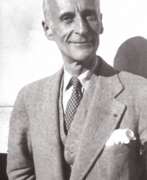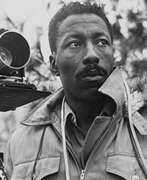Publishers 20th century


Désiré-Magloire Bourneville was a French physician, neurologist, innovator and educator, and statesman.
Born into a modest family, Bourneville began his medical education in 1860 and for about ten years worked as an assistant to Jean-Martin Charcot, where, together with Paul Régnard, he supervised the publication of "Photographic Iconography of Salpetriere". During the Franco-Prussian War, he served as both surgeon and physician's assistant. Appointed physician at Bissetre, Borneville devoted himself to the medical and educational care of "idiots and epileptics" for whom he organized a service, and later directed the Fondation Vallée in Gentilly until his death. He is considered one of the earliest child psychiatrists.
In 1876, Bourneville was elected a municipal councilor of Paris, three years later he became a general councilor of the Seine, and then a deputy. In this capacity, Bourneville carried out several health reforms: he became the rapporteur for the public assistance budget and the budget for psychiatric asylums, achieved the creation of the first special classes for mentally retarded children, and the first municipal nursing school in Salpêtrière.
Bourneville had many very different talents. Very early on he became interested in medical journalism, where he made a name for himself through the vividness of his articles. In 1873, he founded the journal Progrès Médical, which promoted the tenets of avant-garde medicine, open to pioneering scientific developments (Bourneville published Charcot's lessons) and social issues. He fully developed the theoretical and practical foundations of teaching for the nursing profession. Outraged by the lack of practitioners' professional knowledge of obstetrics, he worked to create a new medical specialty, gynecology. But his main purpose in life was to educate and nurture those who were labeled "idiots" and mentally retarded.
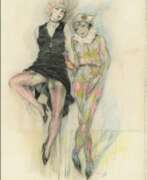

Edouard Chimot was a French Art Deco painter, illustrator and editor.
Edouard studied at the Ecole des Arts Décoratifs in Nice and then at the Ecole des Beaux-Arts in Lille. After the war, he was able to prove himself as an illustrator and master publisher. At the height of the Art Deco heyday, Chimot received a number of commissions to illustrate books with his original engravings, the first of which was the rare book Les Après-Midi de Montmartre with fourteen engravings by Chimot.
In 1920, Édouard Chimot founded his own publishing house, Éditions d'Art Édouard Chimot. Through this venture, he not only continued to create his own art, but also collaborated with other artists and writers to create high quality limited edition books, often with his distinctive illustrations. Édouard Chimot was associated with late Symbolist and decadent culture, and his own work is sometimes referred to as post-Symbolist. His collaborations with famous writers and poets, including Paul Verlaine and Charles Baudelaire, brought his illustrations to the forefront of the Art Nouveau movement.
With the collapse of the financial system in the early 1930s in Europe, the demand for luxury products also fell, but the artist continued to work, produce books and paint. Chimot's artistic style is characterized by sensuality and romanticism. He was an artist of the female figure, style, eroticism and embodied the essence of Art Deco imagery.


Henri Creuzevault was a French publisher, bookbinder and restorer.
In his youth he worked alongside his father, the bookbinder Louis Creuzevault. Together with him, Henri participated in an exhibition at the Musée Gallière in 1928 and received his first award, and in 1930 he became the owner of the workshop. In addition to bookbinding, he began publishing luxury books, commissioning illustrations from contemporary artists. Since then, he has been involved in both publishing and bookbinding at the same time.
At the 1937 International Exhibition, Henri Creuzevault won the First Prize for bookbinding. In 1946, he participated in the creation of the Original Bookbinding Society and took part in its exhibitions and in various book events in France and abroad. He also won a gold medal at the 1954 Milan Triennale. In 1937, the city authorities of Paris commissioned him to make bindings for gifts to the English princesses Elizabeth and Marguerite, as well as for the Golden Book of the Albert I Monument.
With his work, Henri Creuzevault created a new aesthetic concept oriented towards the freest expressions of the modern art of bookmaking.
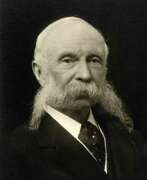

Sir James Crichton-Browne was a British and Scottish psychiatrist, neurologist, and MD.
James studied medicine at the University of Edinburgh, where his interest in psychiatry soon developed. After receiving his MD degree, he worked in hospitals in Derby, Devon and Newcastle. At the age of 26 he was appointed medical superintendent of the Lunatic Asylum in Wakefield and within nine years had transformed the hospital into a leading center for research and treatment.
Crichton-Browne initiated a scientific approach to the brain and its diseases. In 1871 he started the West Riding Asylum Medical Reports, which were published annually for six years. He was a pioneer in combating the common belief at the time that mental asylums could not produce original research and useful science. The persuasive scientist attracted many talented young people to collaborate in his research. Among them were David Ferrier (1843-1928) and Hughlings Jackson, who worked on cerebral localization and epilepsy. In 1878 they together founded what became the famous neurological journal Brain, the first journal devoted to what is now called neurobiology.
Crichton-Browne corresponded extensively with Charles Darwin, providing him with drawings and photographs for his book The Expression of Emotion in Man and Animals. Darwin valued his co-author so much that in 1883 he proposed that he be elected a Fellow of the Royal Society.
Crichton-Browne was also active in the development of public health policy regarding mental health. He worked prolifically into old age, writing monographs and autobiographical material, but in recent years he became involved in the controversial science of eugenics.


Edward Everett Hale was an American clergyman, preacher and writer, abolitionist and pacifist.
Hale demonstrated outstanding literary ability from an early age. He went to Harvard College and became a minister and preacher. Grandnephew of Revolutionary hero Nathan Hale and nephew of orator Edward Everett, Hale worked for his father's newspaper, the Boston Daily Advertiser. And for 70 years he never stopped writing newspaper articles, historical essays, short stories, pamphlets, and sermons for the North American Review, The Atlantic Monthly, and the Christian Examiner. From 1870 to 1875 he published and edited the Unitarian magazine Old and New.
Hale wrote several novels, of which the most popular were East and West (1892) and In His Name (1873). Hale's most famous novel, A Man Without a Country, first published in The Atlantic Monthly in 1863, was written to evoke patriotism during the Civil War. It is a political fable about a man who renounces his American citizenship and greatly regrets it.
Many of Hale's 150 books and pamphlets were tracts in support of the ideas of Negro education, worker's housing, and world peace. The moralistic novel Ten Times One is Ten (1871) was the impetus for the organization of several youth groups.
In 1847, Hale was elected a member of the American Antiquarian Society and remained a member for the rest of his life. A 10-volume collection of Edward Hale's writings was published between 1898 and 1900. In 1903 he was appointed chaplain of the United States Senate and joined the Literary Society of Washington. The following year he was elected a member of the Academy of Arts and Sciences.


Bernhard Jäger, born on June 17, 1935, in Munich, Germany, is a multifaceted artist known for his work as a painter, printmaker, and sculptor. Initially pursuing biology between 1956 and 1957, Jäger later shifted to art studies at the Werkkunstschule Offenbach, graduating in 1961. His background in biology notably influenced his artistic career, adding a unique depth and perspective to his creations.
Jäger co-founded the Gulliver-Presse with fellow lithographer Thomas Bayrle, and during this time, he also embarked on a secondary career as a publisher until 1966. His contributions to the world of book art are significant, with some of his illustrated books being awarded the prize "Die schönsten Bücher des Jahres" by the Stiftung Buchkunst in 1970, 1984, and 1994. He is also known for designing thirty book covers for Jorge Luis Borges' "The Library of Babel" published by the Gutenberg Book Guild in 2007.
Besides his contributions to book art, Jäger has held positions as a guest lecturer and head of the evening school at Städelschule in Frankfurt am Main. He also served as a visiting professor at the Hamburg University of Applied Sciences. His work has been featured in numerous solo and group exhibitions, including the Stedelijk Museum, Amsterdam, and the San Francisco Museum of Modern Art.
Bernhard Jäger is a member of the Darmstadt Secession and a recipient of the Prize of the Heitland Foundation in 1998. His works are included in public collections such as the Museum of Fine Arts, Boston, and the Klingspor Museum, Offenbach.
For collectors, auctioneers, and experts in art and antiques, Bernhard Jäger's work offers a rich blend of artistic styles influenced by his diverse background. His works, especially his lithographs known as "X-ray graphics," are sought after in the art market.
To stay informed about sales and auctions related to Bernhard Jäger's art, signing up for updates is recommended. This subscription will provide timely information about new product sales and auction events related to his art.


Theophilus Johnson was a British artist, amateur naturalist and publisher.
He trained as a clerical worker and then started his own printing business. Johnson had a passion for the natural sciences and spent much time in the gardens of the Zoological Society of London. His drawings and books cover a wide range of topics, from molluscs to mammals, but his main interest was entomology.
Theophilus Johnson's publications on entomology depict the various species of moths found in the British Isles on beautifully colored watercolor sheets, and include illustrations of their larvae as well as the plants they feed on. During his lifetime he illustrated more than 46 volumes with original watercolors.
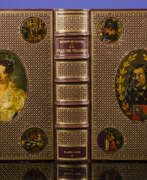

René Kieffer was a French bookbinder, publisher and bookseller.
A pupil of Henri Marius Michel, he worked for ten years as a gilder at the Chambolle-Douroux bookbinding factory. In 1903 René Kieffer opened his studio in Paris, and in the same year his work was first shown at the Salon de la Société des Artistes-Decorators.
Over time, his work shifted from classical forms to Art Nouveau motifs. René Kieffer was known for using bright colors in elaborate designs, creating luxurious bindings for unique publications. Between 1917 and 1923, he created Pierre Legrain's designs for Jacques Doucet's library. As a bookbinder and publisher, René Kieffer was vice-president of the book department of the 1925 Paris International Exhibition of Decorative Arts and Modern Industry. He also participated in the International Exhibition of Arts and Technology in Modern Life in Paris in 1937.


Klaus Kinold is a German architectural photographer.
Klaus Kinold studied architecture at the Technical University of Karlsruhe with Egon Eiermann, and then decided not to build but to show architecture. He opened an architectural photography studio in Munich and studied panoramic photography. For more than 25 years, Kinold was editor and illustrator of the Swiss professional publication KS Neues, which featured silicate brick buildings, and lectured on photography at the State Academy of Fine Arts in Stuttgart.
In 1983, Klaus Kinold had his first solo exhibition at the Rudolf Kieken Gallery in Cologne, followed by many other prestigious shows. From 2019 to August 2020, the DKM Museum in Duisburg designed the exhibition "Architecture through the eyes of a photographer", featuring the work of architects Carlo Scarpa, Rudolf Schwarz and Hans Döllgast.
Kinold documented almost all of the famous architects' projects. It was important to the photographer that his preferably black and white photographs were clear, objective, rational and factual in their presentation.


August Köllner (German: Augustus Koellner or Köllner), full name Augustus Theorore Frederick Adam Kollner, was a German and American painter and illustrator, engraver, and publisher.
August Köllner studied painting and lithography in Frankfurt, moved from Germany to the United States, and settled in Philadelphia in 1839. He soon took a job with Huddy and Duvall's U.S. Military Journal. In the 1840s he worked on a series of watercolors, fifty-four of which were published in 1848-51 by the Paris firm of Goupil, Vibert & Co. under the title Views of American Cities.
August Köllner worked on book illustrations, designed various merchandise, and worked for other lithographic firms in Philadelphia until he went into business for himself as a printer and lithographer. He exhibited his drawings at the Pennsylvania Academy of the Fine Arts in Philadelphia in 1865 and 1868.


Karl Otto Lagerfeld is a German fashion designer, designer, photographer, collector and publisher.
Karl found himself in the fashion world by chance, as he planned to work as an illustrator. At the age of 21, he entered the 1954 International Woolmark Prize and won first place for his sketch of a coat, which launched his career. For the next 65 years, fashion remained the foundation of his work, although he spent his life actively expressing himself in other areas of art.
In 1987, Karl shot his first advertising campaign and developed a passion for photography. In 1999, he opened his own photography studio in Paris, where he has taken countless images of the world's greatest figures in art and fashion. Many of Carl's photographs have also been used in art books. Karl was also a master of self-portraits: throughout his life he photographed and painted his iconic image.
A passionate bibliophile (his personal library numbered 300,000 volumes), Lagerfeld merged his photography studio with the 7L bookstore and later opened EDITIONS 7L, a publishing house specializing in books on design and photography. He was also involved in various interior design and architecture projects.
In 1965 Lagerfeld took over the Italian fashion house Fendi, where he created collections of leather and fur garments, and in 1983 he became the artistic director of the French house Chanel - with these companies he had lifetime contracts. In 1984, Lagerfeld founded his own fashion house, Karl Lagerfeld Impression.


Bruce Rogers, born Albert Bruce Rogers, was an American typographer and book designer who had a major influence on the development of book design in the United States in the early 20th century.
Trained as an artist, Rogers began working as an illustrator for an Indianapolis newspaper. In 1895 he moved to Boston, where he met masters in book publishing, including George Mifflin of Houghton Mifflin, who offered him a job at the Riverside Press. When the publishing house opened a limited edition department in 1900, Rogers was appointed its manager and was responsible for the design and printing of unique books. Over the next 12 years, he developed several new typefaces and produced more than 100 Riverside Press editions, which are highly regarded.
From 1916 he worked as an advisor to Cambridge University Press in England, where he supervised the preparation of the monumental Oxford Lectionary Bible, and then served as an advisor to Harvard University Press in the United States until 1934. Bruce Rogers also designed outstanding books for the William E. Rudge Printing Company in Mount Vernon, New York. His other bibliophile books and limited editions include The Odyssey, an edition of Shakespeare, the Boswell Papers, and the American Folio Lectern Bible. Bruce Rogers is considered one of the preeminent book designers of the twentieth century.


François-Louis Schmied was a French painter, illustrator, wood engraver, printmaker, editor and Art Deco binder.
François-Louis studied wood engraving at the École des Arts industriels in Geneva and painting at the École des Beaux-Arts de Genève. A Swiss, Schmied settled and naturalized in France in 1895. In 1910, he was commissioned to engrave and print Paul Jouve's illustrations for Rudyard Kipling's The Life of the Jungle, which was not published until 1919. For this book, now considered a masterpiece, the master produced about 90 color illustrations. Thanks to the success of this publication, Schmied was able to expand his activity and hire a group of craftsmen to execute his most famous and innovative works.
François-Louis Schmied is considered one of the greatest Art Deco artists and became particularly famous for his beautiful rare books for bibliophiles. Schmied's unique books were very expensive to produce, which required a lot of time and effort, and were always printed in very limited editions, from 20 to 200 copies. During the Great Depression, Schmied's expensive projects could not withstand the competition: the master was forced to sell off almost all his assets and close his workshop and store, and around 1932 he left for Morocco, where he died.
François-Louis Schmied's works are not only aesthetically pleasing, but also express his desire to combine art and literature. The talented artist conveyed with passion and precision the essence of the Art Deco style contemporary to him. Today, Schmied's works, reissued as fine art reproductions, not only convey the aesthetics and precision inherent in each of his originals, but also add a new dimension to them. His son, Theo Schmied, took over François-Louis Schmied's workshop in 1924, reviving its former glory and revitalizing it over time.


Julia Ward Howe is an American writer and poet, philosopher, abolitionist, and feminist.
Born into a well-to-do family and privately educated, Julia Ward married educator Samuel Gridley Howe and settled in Boston. She published her first collection of poems, Passionate Flowers, in 1854.Julia's early poems were praised by Hawthorne, Whittier, and Longfellow for their intellectual intensity. For a time Howe published the abolitionist newspaper Commonwealth with her husband. And in February 1862, The Atlantic Monthly published her poem "Battle Hymn of the Republic," which became the semi-official Civil War song of the Union Army, and Howe gained fame.
After the war, Howe began fighting for women's rights. In 1868, she was elected the first president of the New England Women's Suffrage Association. In 1868, she helped found the New England Woman's Club and became its president in 1871, the same year she became the first president of the American branch of the International Women's Peace Association. She was later active in the International Federation of Women's Clubs. Howe continued to write throughout her life, publishing travel books, poems, collections of essays, and biographies.
In 1870, she co-founded Woman's Journal and then served as its editor for 20 years. She traveled extensively until her advanced old age. In 1908, she became the first woman elected to the American Academy of Arts and Letters.


Andy Warhol, born as Andrew Warhola Jr., was an American visual artist, film director, and producer, who played a pivotal role in the development of the Pop Art movement. His art delved into the interplay between artistic expression, advertising, and celebrity culture, especially prevalent in the 1960s. Warhol was renowned for his diverse range of media, which included painting, silkscreening, photography, film, and sculpture.
Warhol's journey began in Pittsburgh, where he was born and raised, initially making a name for himself as a commercial illustrator. His New York studio, "The Factory," became a famous hub for intellectuals, celebrities, and various artistic minds. He was known for creating the notion of "Warhol superstars" and popularized the phrase "15 minutes of fame."
His contribution to the art world is significant, with notable works like "Campbell's Soup Cans" (1962) and "Marilyn Diptych" (1962), as well as his experimental films like "Empire" (1964) and "Chelsea Girls" (1966). These works not only define his career but also underscore the essence of the Pop Art movement.
Warhol's influence extended beyond his artwork. He managed and produced the experimental rock band The Velvet Underground, founded Interview magazine, and wrote several books, including "The Philosophy of Andy Warhol" and "Popism: The Warhol Sixties." Living openly as a gay man before the gay liberation movement, Warhol's personal life was as influential as his professional endeavors.
Tragically, Warhol's life was nearly cut short in 1968 when he was shot by radical feminist Valerie Solanas. He eventually passed away in 1987 due to cardiac arrhythmia following gallbladder surgery. His legacy continues, with The Andy Warhol Museum in Pittsburgh standing as the largest U.S. museum dedicated to a single artist.
Warhol's art remains highly collectible and valuable. His works, like the "Silver Car Crash (Double Disaster)" and "Shot Sage Blue Marilyn," have fetched staggering amounts at auctions, signifying his enduring impact on the art market.
For art collectors and experts, Andy Warhol's work represents a crucial intersection of pop culture and fine art, offering a unique perspective on consumerism and celebrity. His pieces are not just art; they are historical landmarks that capture a transformative era in both art and society.
To stay updated on new products, sales, and auction events related to Andy Warhol, sign up for our updates. This subscription will keep you informed about all things Warhol without overwhelming you with unnecessary information.








































